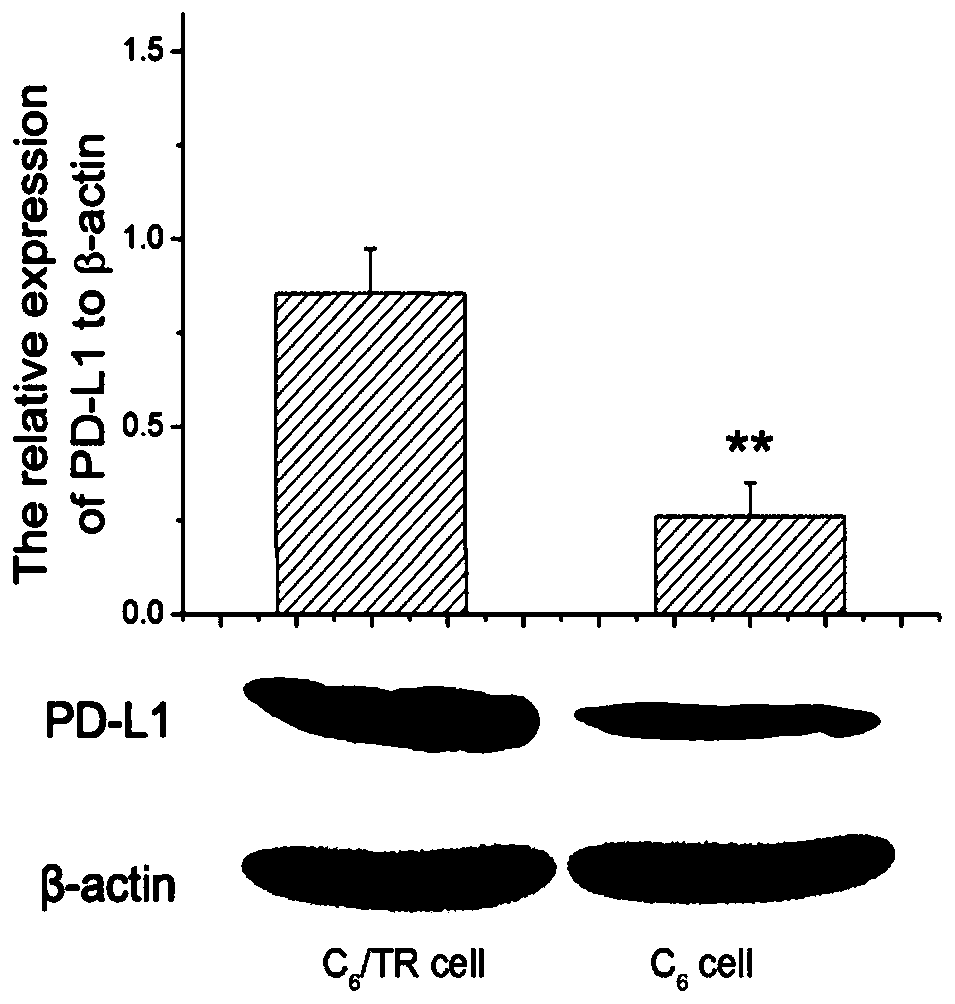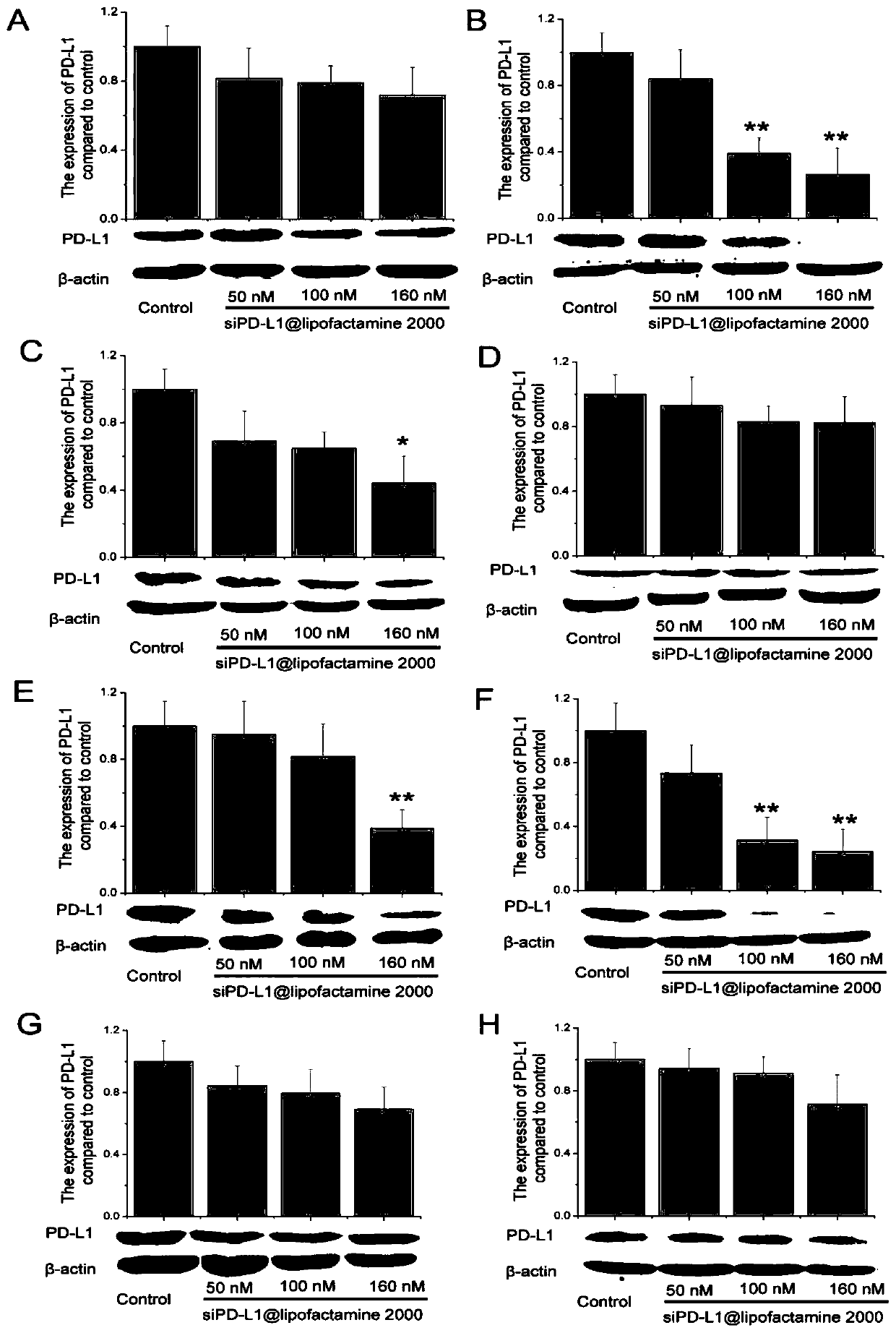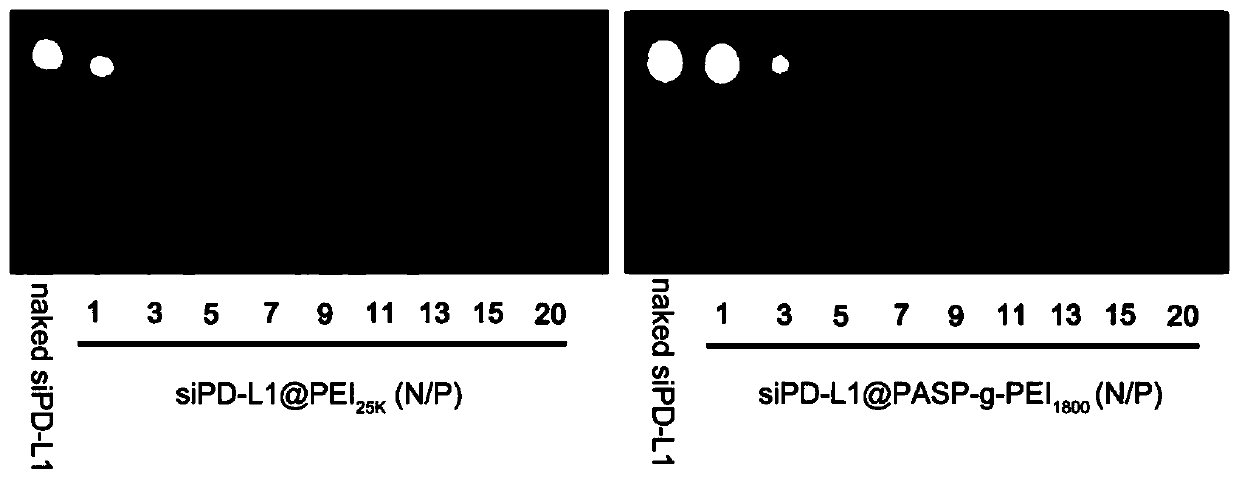Brain-targeted drug delivery system for improving microenvironment of drug-resistant glioma and reverse drug resistance
A brain glioma and lipid technology, applied in the field of new brain-targeted drug delivery system, can solve the problems of dosage toxicity, reduction of PEI compression siRNA, and large molecular weight of PEI
- Summary
- Abstract
- Description
- Claims
- Application Information
AI Technical Summary
Problems solved by technology
Method used
Image
Examples
Embodiment Construction
[0027] 1 Research method:
[0028] 1.1 siPD-L1 base pair sequence activity screening
[0029] Design and synthesize siPD-L1 with different sequences, and use lipofactamine 2000 transfection reagent to transfect siPD-L1 with different sequences into C 6 In / TR cells, western blot was used to examine each siPD-L1 sequence pair C 6 silencing of PD-L1 in / TR cells.
[0030] 1.1.1 Drug handling
[0031] Take C in the logarithmic growth phase 6 For / TR cells, wash with PBS buffer, add 2ml of 0.25% trypsin solution, digest for 1min, discard the trypsin solution, add 4ml of DMEM complete culture solution, blow off the cells, use a cell counting plate to calculate the cell concentration, add DMEM for complete culture solution to dilute the cell concentration to 1x10 6 pc / ml, add to six-well plate, add 2ml to each well, incubate in carbon dioxide constant temperature incubator for 24h, discard the culture medium, add siPD-L1@lipofactamine 2000 compound with siPD-L1 concentration of...
PUM
| Property | Measurement | Unit |
|---|---|---|
| particle diameter | aaaaa | aaaaa |
Abstract
Description
Claims
Application Information
 Login to View More
Login to View More - R&D
- Intellectual Property
- Life Sciences
- Materials
- Tech Scout
- Unparalleled Data Quality
- Higher Quality Content
- 60% Fewer Hallucinations
Browse by: Latest US Patents, China's latest patents, Technical Efficacy Thesaurus, Application Domain, Technology Topic, Popular Technical Reports.
© 2025 PatSnap. All rights reserved.Legal|Privacy policy|Modern Slavery Act Transparency Statement|Sitemap|About US| Contact US: help@patsnap.com



